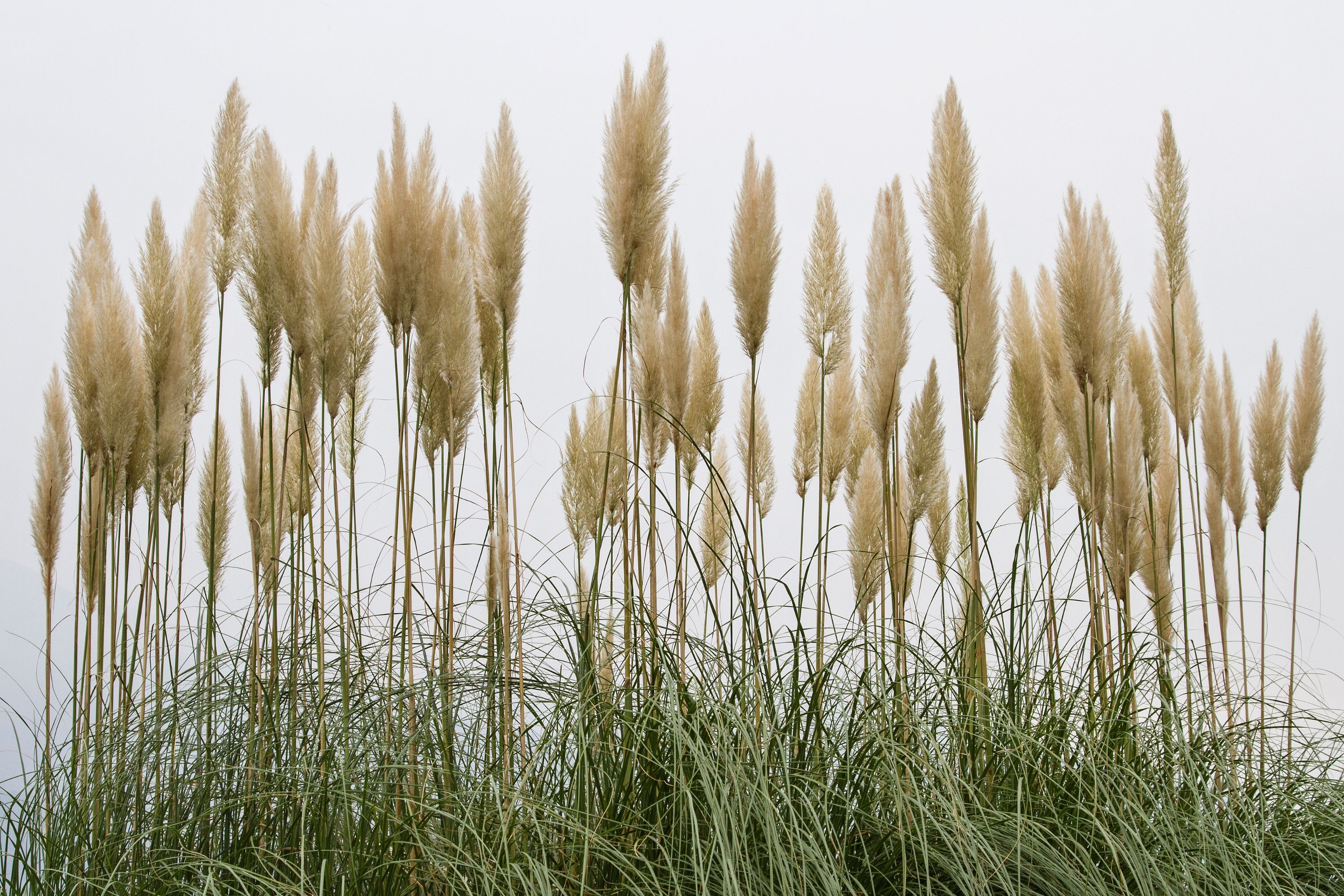Pampas Grass
(Cortaderia selloana)

Description
Cortaderia selloana is a species of flowering plant in the Poaceae family. It is referred to by the common name pampas grass, and is native to southern South America, including the Pampas region after which it is named. Cortaderia is derived from the Argentine Spanish name ‘cortadera’, meaning ‘cutter’, in reference to its razor sharp leaf margins. Selloana is named for Friedrich Sellow (1789-1831), a German botanist and naturalist from Potsdam who worked as a plant collector in Brazil. He studied the flora of South America, especially that of Brazil. The specific epithet selloana was given by Josef August and Julius Hermann Schultes in 1827. Cortaderia has become invasive in mild-winter areas of North America. It has also been banned in Hawaii and New Zealand because of its ability to outgrow and displace native plants. In Europe, it was first introduced in the United Kingdom, later spreading to other countries in the continent like Ireland, Portugal, Spain, France, and Italy. Pampas grass is fast-growing and can form large masses along the roads, cliffs, riverbanks, and open areas that have been disturbed by human activities or natural disturbances. Pampas grass can displace native plants and destroy their habitats, reducing biodiversity. The blade-like leaves may cause physical harm to the birds who feed off of it. The plant also competes with other native plants by monopolizing resources like shade, sunlight, and ground nutrients. Because of the large surface area, the leaves pose a significant fire hazard if placed near flammable substances.
Taxonomic tree:







